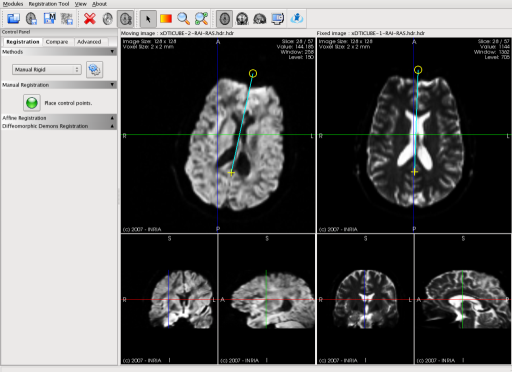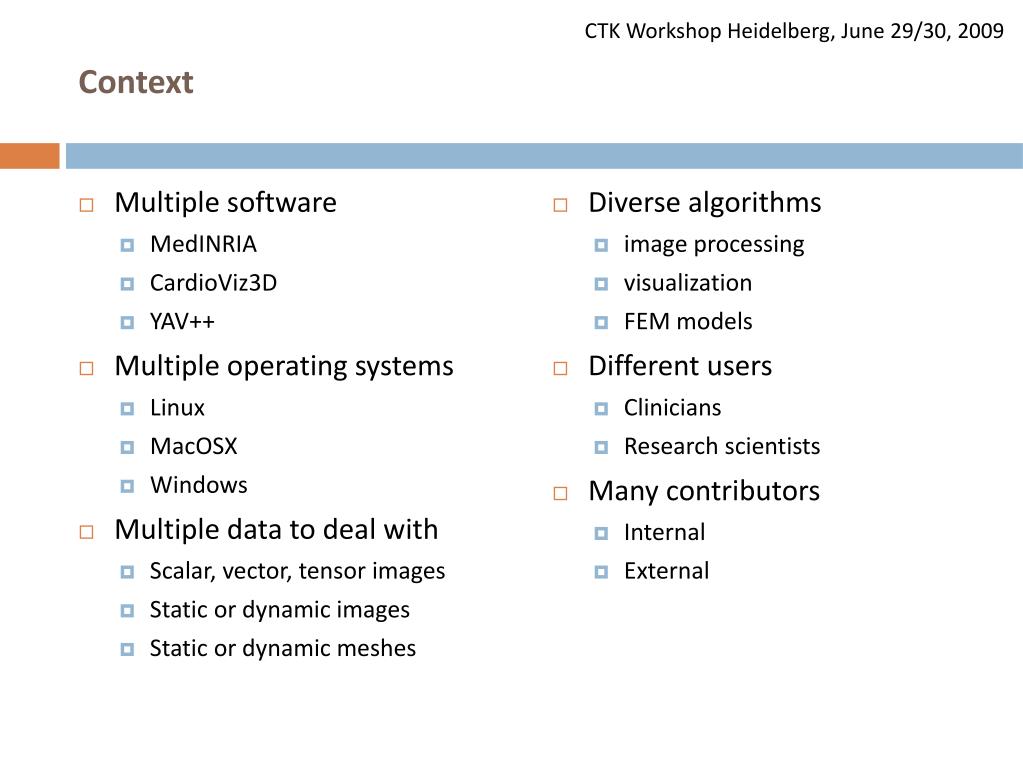

Manual registration allows the user to register a source image to a target image in a few clicks, by placing some landmarks in the input image spaces It provides an easy to use toolkit for three types of registration : The ImageFusion is entirely dedicated to image registration and comparison. You can then save the flipped tensors and use it to track fibers with DTI Track.Īuthors : Pierre Fillard Nicolas Toussaint. The Tensor Viewer provides the possibility of flipping the tensor field among the x,y, and z axes, to tackle some acquisition geometry problems.

Monoplanar (only one plane) visualization and multiplanar (3 planes) visualization are possible, with or without the image. the B0 image) with the tensor field, and control its contrast and windowing. You can downsample the tensors for faster rendering.

The glyphs are colored in RGB (principal eigenvector), and intensity is weighted by the Fractional Anisotropy of the tensor. Visualize tensors in various ways: tensors are represented as glyphs, such as lines, arrows (principal eigenvector), but also cubes, ellipsoids, etc. With Tensor Viewer, you will be able to check the validity of the diffusion tensors, correct a geometry problem if any by flipping the tensors, and save the result. Sometimes, tensors are flipped due to errors in the acquisitions or storing process. It allows you to visualize tensor fields obtained with the DTI module. The Tensor Viewer is complementary to DTI Track. Now you can fuse your fMRI studies with DT-MRI data: Automatically create ROIs from activation maps and look for possible pathways linking activated regions! The statistics are also available for the ROIs. Statistics are computed on the extracted fiber bundles: Histograms of scalar values (FA/ADC) and fibers length bundle by bundle are given. Set a colour and a label to each selected bundle, and save your result! Selection of a bundle of interest: Either with ROI definition (limit the fibers to those that go through all the ROIs), or interactively in 3D using a Cropping Box. ROIs are automatically rendered in 3D with isosurfaces. Manual definition of Regions of Interest (ROIs), slice by slice, on axial, coronal and sagittal views. Powerful fiber tracking algorithm, using tri-linear Log-Euclidean interpolation. Scalar maps calculation: FA (Fractional Anisotropy), ADC (Apparent Diffusion Coefficient), etc. Multi-Planar Reconstruction (MPR) and Volume Rendering (VR) techniques are available.įast tensor estimation, tensor smoothing and DTI analysis. Most of the usual medical file formats are supported (including SPM Analyze 7.5). Features (non-exhaustive list)įast and convenient image visualization.

This module uses Log-Euclidean metrics to process tensors, protected by a patent (Filing Number 0503483).Ī more detailed description of the algorithms used in this module can be found in the log-euclidean and the fiber tracking pages. A brief descriptions of the features is given below. Moreover, it is now possible to fuse fMRI data with fiber pathways, to determine likely paths linking activated regions. From diffusion tensor field estimation, to FA/ADC computation, tensor smoothing, and fiber extraction, this module will help you to extract a fiber bundle of interest. The DTI Track module provides all necessary tools for in-deep DT-MRI analysis and fiber tracking. Authors : Pierre Fillard, Nicolas Toussaint.


 0 kommentar(er)
0 kommentar(er)
